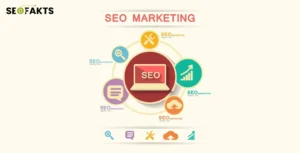In today’s digital landscape, effective content writing goes hand-in-hand with strong SEO practices. As search engines continuously evolve, understanding how to optimize your content can significantly impact your website’s visibility. Here are ten essential SEO tips, content writers that will not only enhance your writing but also help boost your website’s ranking.
Related blog Unlocking the Secrets of Effective SEO: What You Need to Know
1. Keyword Research is Your Foundation
Keyword research is the bedrock of any successful SEO strategy. Begin by identifying the keywords that resonate with your audience and align with your content goals. Use tools like Google Keyword Planner, Ahrefs, or SEMrush to discover search volume, competition level, and related keywords.
Actionable Steps:
- Aim for a mix of primary and secondary keywords.
- Look for long-tail keywords, which typically have lower competition and higher conversion potential.
- Analyze competitors to find keywords they rank for but that you might be missing.
2. Optimize Your Headlines
The headline is often the first thing potential readers see, so make it count. A well-crafted headline not only captures attention but also improves your SEO. Incorporate your primary keyword naturally and make it engaging to entice clicks.
Actionable Steps:
- Use numbers or questions to make headlines more compelling (e.g., “5 Ways to Boost Your SEO”).
- Keep headlines under 60 characters to ensure they display fully in search results.
- Consider A/B testing different headlines to see which performs better.
Related blog The Future of SEO: Trends You Can’t Afford to Ignore
3. Use Subheadings Wisely
Subheadings (H2, H3, etc.) break up your content, making it easier to read and digest. They also help search engines understand the structure of your content. By including relevant keywords in your subheadings, you can enhance your SEO efforts.
Actionable Steps:
- Use descriptive subheadings that summarize the section’s content.
- Maintain a clear hierarchy (H2 for main sections, H3 for subsections) to improve readability.
- Ensure your subheadings are keyword-rich without sounding forced.
4. Craft Engaging Meta Descriptions
A meta description serves as a brief summary of your content in search engine results. A well-written meta description can improve your click-through rates, driving more traffic to your site.
Actionable Steps:
- Write compelling descriptions of around 150-160 characters.
- Include your primary keyword to improve relevance.
- Use a call-to-action (e.g., “Learn more,” “Discover how”) to encourage clicks.
5. Focus on Quality Content
Quality is king when it comes to SEO. Google prioritizes content that provides real value to users. Aim to create informative, well-researched articles that address the needs and questions of your target audience.
Related blog Top Social Media Trends to Watch in 2024
Actionable Steps:
- Strive for content length of at least 1,500 words, but prioritize depth over word count.
- Use credible sources to back up your claims, enhancing your authority.
- Keep your writing engaging with a clear voice and style.
6. Optimize for Mobile Users
With mobile users making up a large portion of web traffic, ensuring your content is mobile-friendly is crucial. Google employs mobile-first indexing, meaning it primarily uses the mobile version of your site for rankings.
Actionable Steps:
- Use responsive design to ensure your site adjusts seamlessly to different screen sizes.
- Test your site’s loading speed on mobile devices and optimize images and scripts to improve performance.
- Keep paragraphs short and use bullet points to enhance readability.
7. Incorporate Internal and External Links
Linking is a fundamental aspect of SEO. Internal links guide readers to related content on your site, enhancing user experience and keeping visitors engaged longer. External links to reputable sites can boost your credibility and authority.
Actionable Steps:
- Strategically link to your own related articles to encourage exploration.
- Choose external links that are reputable and relevant to your content.
- Regularly audit your links to ensure they are still relevant and functional.
8. Utilize Alt Text for Images
Images can enhance your content significantly, but search engines can’t interpret them. Using alt text (alternative text) helps search engines understand what the image is about and improves accessibility for visually impaired users.
Actionable Steps:
- Describe the image clearly and concisely in the alt text, incorporating relevant keywords.
- Avoid keyword stuffing; keep it natural and straightforward.
- Use descriptive filenames for your images before uploading.
Related blog Top Digital Marketing Trends You Need to Know in 2024
Conclusion
By applying these ten essential SEO tips, content writers can create valuable, optimized content that resonates with readers and search engines alike. Remember, SEO is not a one-time effort but a continuous journey. Stay updated on the latest trends, algorithm changes, and best practices to ensure your content remains competitive in the digital landscape. Happy writing, and may your content rise to the top of the search results.





